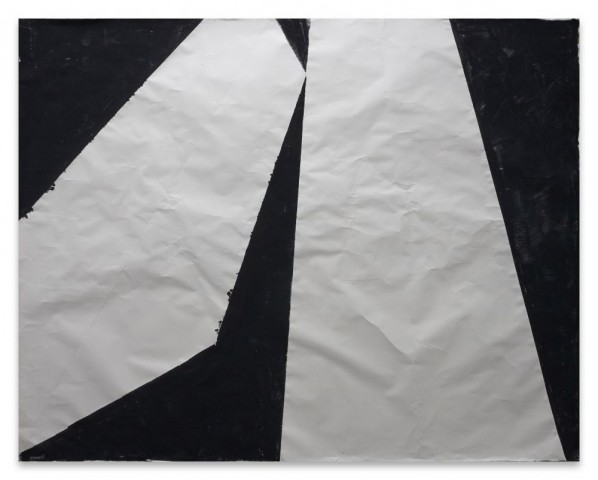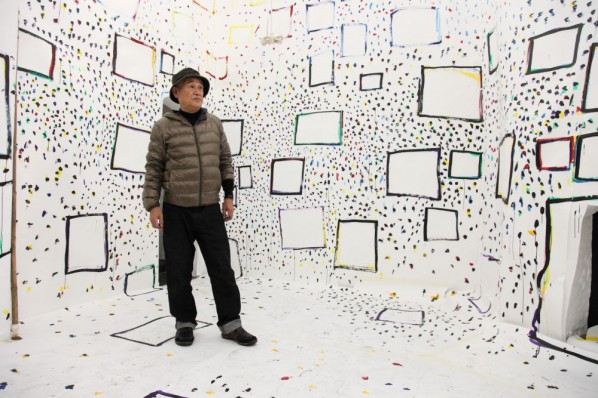
Sadaharu Horio, Untitled, 2015-Traditional japanese paper, Echizen Washi,
Workshop Heizaburo Iwano, folded 219cm x 277 cm
The relationship between art and everyday life is a key to understand Horio’s practice. He sees beauty in everyday life and turns our gaze to the ordinary through his works. Art and everyday life are inseparable for the artist. Each and every moment is singular and unique, therefore, every waking hour is to create and perform. The Japanese phrase, Atarimae No Koto (A Matter of Course), explains his artistic concept and working method well. He takes the various mediums he can find in his surroundings, everything from scraps of metal to pieces of wood and even junks. His works make us discover how meaningful and beautiful the ordinary, banal objects around us in our everyday life can be.
Highly prolific and energetic, he creates numerous paintings and drawings in a short period time with great intensity. There is no hesitation or change after the work is done. It’s very spontaneous and truthful to the moment. Horio creates or performs whatever comes into his mind. The meaning of creation is not related to usefulness, intellect or consciousness, as his practice is not about understanding something, but encountering something new. The speed in the process enables the ability to capture the present time and space. He visualizes impermanence and tells us we should live in the moment.
He doesn’t intend to make any political or social statement, but wants to show the importance of those invisible yet crucial elements in our life. No special techniques are engaged in the process. He rather emphasizes rather on quantity and speed. The way he creates artworks is something anyone can understand. Horio eliminates any possibility of consciousness to intervene in the work process. Instead, he embraces elements of chance, every process counts and brings about “expression without expression.” This is why his work can be seen as both performance and painting. Art becomes something we can experience or create anytime in any situation.
The performative, spontaneous aspects of his work, as well as the freedom and openness in the process, strongly associate his works with the Gutai spirit. One can expect infinite possibilities. The energy and creativity coming out from the artist is enormous. His extensive endeavor to pursue originality makes him not only one of the most representative living Gutai artists, but also an outstanding figure as a contemporary artist.

Sadaharu Horio; Courtesy of the artist and Axel Vervoordt Gallery
About the artist
Sadaharu Horio lives and works in Kobe. He first exhibited his works in the 15th Gutai Art Exhibition at the Gutai Pinacotheca in 1965. He became a member of the Gutai group a year after and remained until they disbanded. He’s a founding member of the artist collective Bonkura and on-site art squad Kuki. He participated in several historical exhibitions and performance events at Ashiya City Museum of Art & History since 1957 and at Kyoto Independents in 1964. Recent group exhibitions include Yokohama International Triennial of Contemporary Art (2005); In-Finitum at Palazzo Fortuny in Venice (2009); Atarimae-No-Koto at Frankfurt LAB (2011); Moderna Museet in Stockholm (2012); Solomon R. Guggenheim Museum in New York (2013).
About the exhibition
Duration: 14.05.2015 - 09.07.2015
Opening: May 14th, 6-8pm
Venue: Axel Vervoordt Gallery
Courtesy of the artist and Axel Vervoordt Gallery.




























